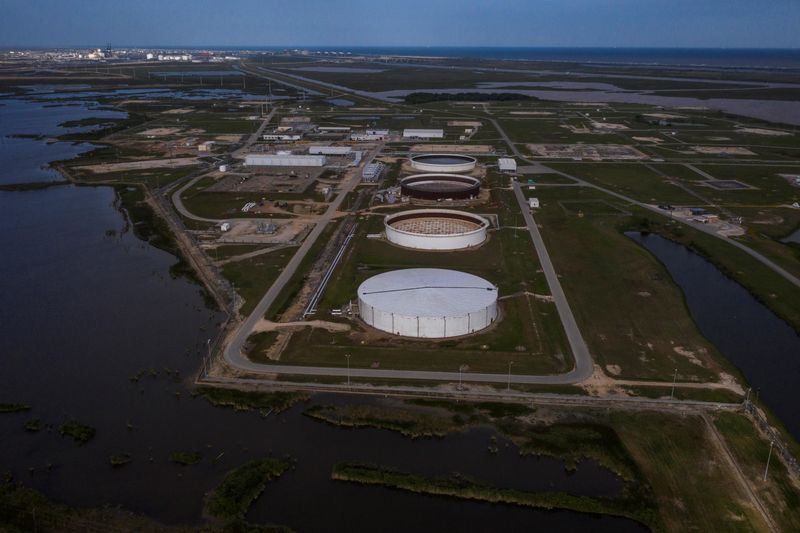By Nicole Jao
NEW YORK (Reuters) -Oil prices rose more than 2% on Wednesday, recovering from multi-month lows, after data showed inventories were higher than expected, even as concerns about weak oil demand in China remained persist.
futures closed up $1.85, or 2.42%, at $78.33 a barrel. U.S. West Texas Intermediate crude gained $2.03, or 2.77%, to $75.23.
U.S. crude inventories fell for a sixth straight week, falling 3.7 million barrels last week to 429.3 million barrels, government data showed. This exceeded analyst expectations in a Reuters poll for a draw of 700,000 barrels.
“The story here is really that demand is stronger than people thought and overall supply is tighter,” said Phil Flynn, an analyst at Price Futures Group. “Crude oil supply is below average for this time of year.”
Industry data from the American Petroleum Institute showed an unexpected increase in crude oil and gasoline inventories on Tuesday.
On Monday, Brent fell to the lowest since early January and the WTI hit its lowest level since February as the global stock market deepened on concerns about a possible US recession following weak jobs data.
Both oil benchmarks broke a three-session downtrend on Tuesday.
“The recovery we achieved from Monday’s big downturn shows that it was a very short-lived tantrum and not a market crash,” said Tim Snyder, chief economist at Matador Economics.
Lower production at Libya’s Sharara oil field with a capacity of 300,000 barrels per day (bpd) is also adding to concerns about supply shortages.
Libya’s National Oil Corp has declared force majeure at its Sharara oil field from August 7, the company said on Wednesday. NOC had said on Tuesday that it would gradually reduce production on the field due to protests.
Tensions in the Middle East continued to fuel supply concerns.
The Middle East is bracing for a possible new wave of attacks by Iran and its allies following the killings last week of senior members of the militant groups Hamas and Hezbollah, with growing concerns that the conflict in Gaza is turning into a broader war in the Middle East.
Iran-linked Houthi militants attacked a container ship in the Red Sea and two US destroyers in the neighboring Gulf of Aden on Wednesday. Attacks on ships transiting the region have forced tankers to take longer alternative routes.

“Any escalation of conflict in the Middle East could bring a greater risk of supply disruptions from the region,” ANZ analyst Daniel Hynes said.
Chinese trade data supports the bearish demand picture, showing that daily crude oil imports in July fell to the lowest level since September 2022. China is the world’s largest crude oil importer.


